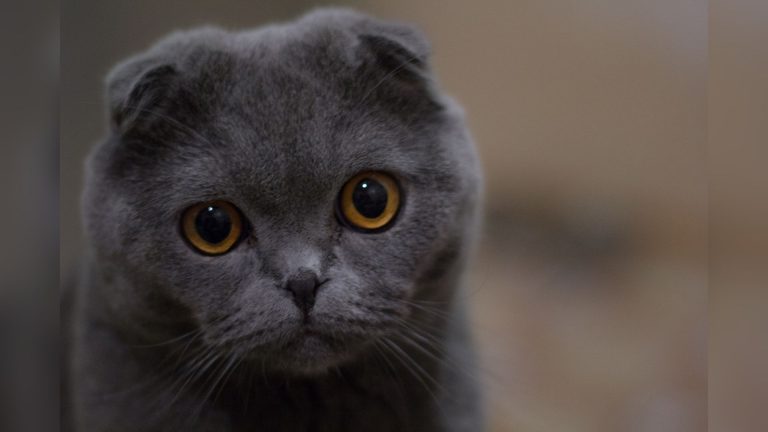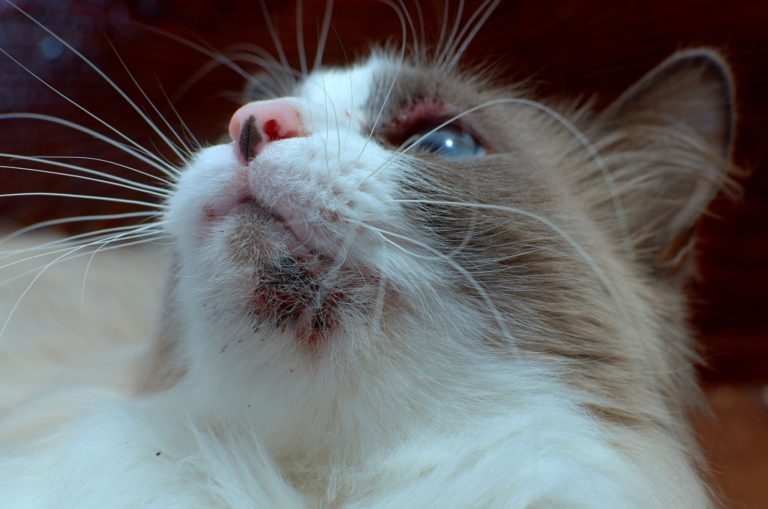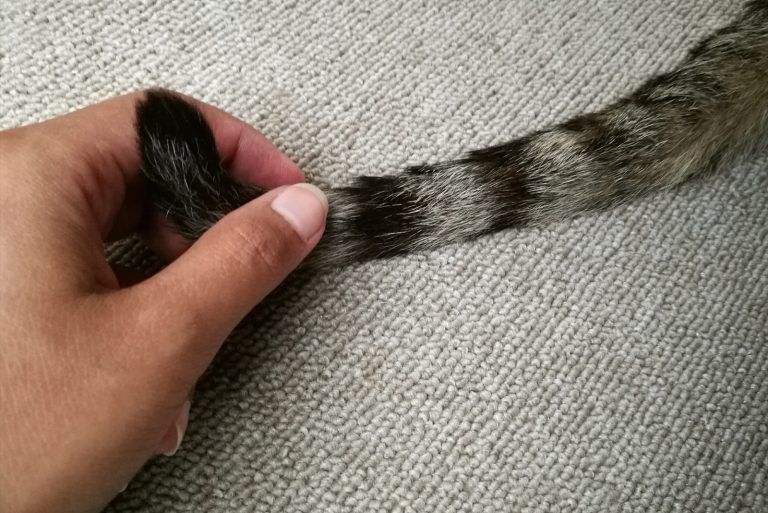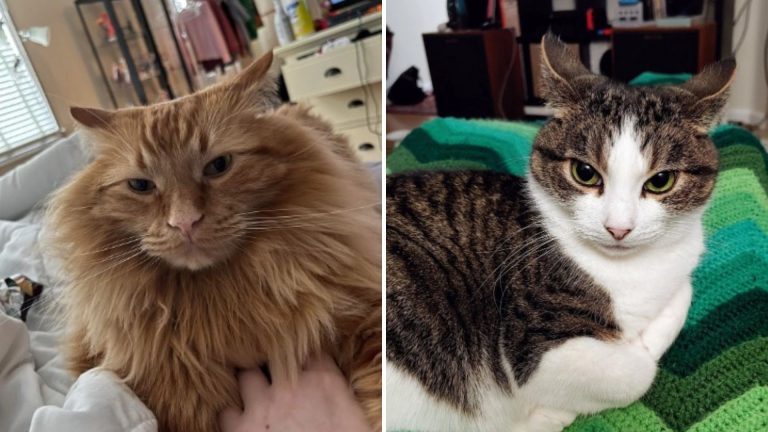7 Causes For Yellow Cat Poop & How To Solve It
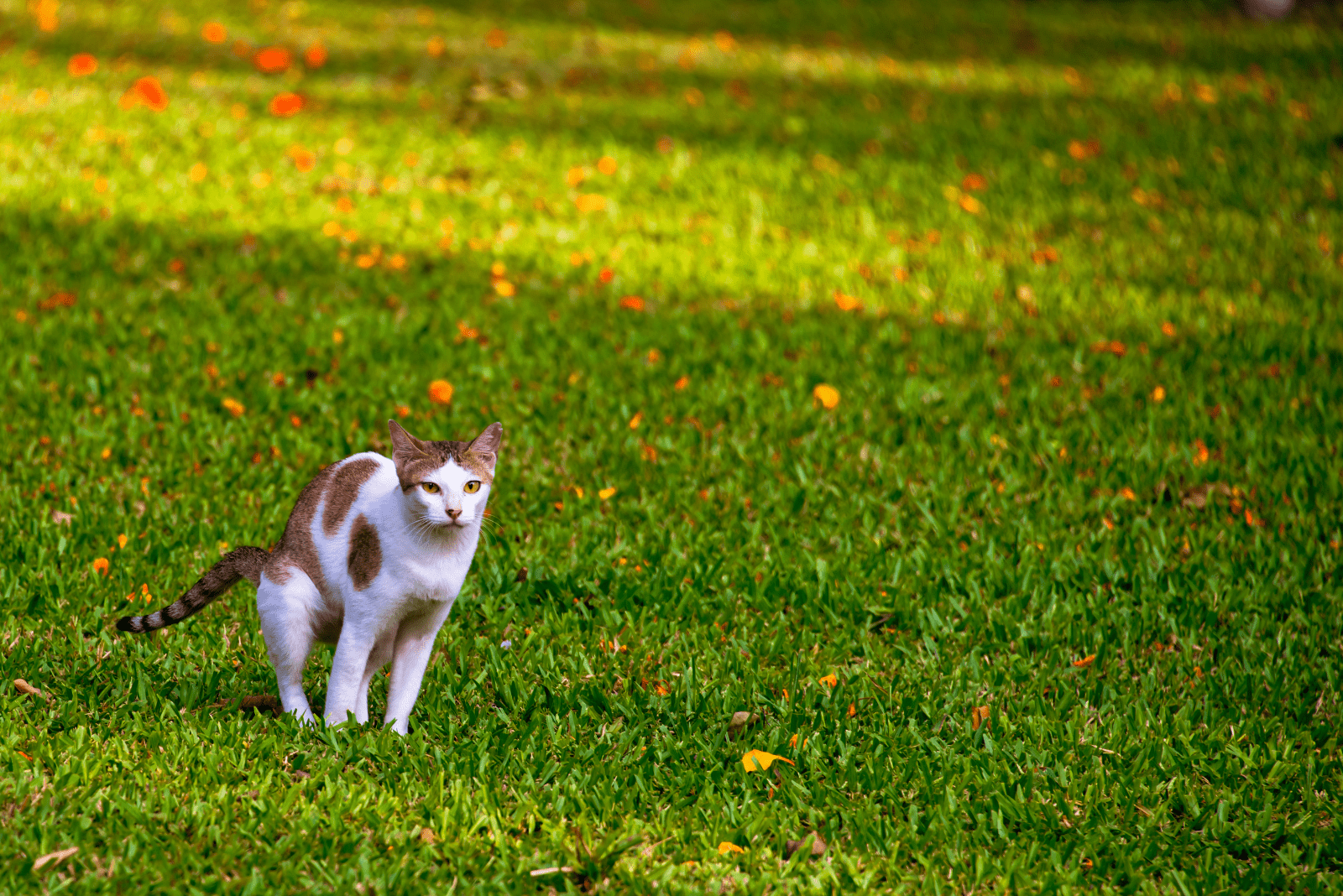
Have you ever seen yellow cat poop? Does it look normal to you?
Everyone knows that normal poop should be brown, therefore, other colors are often considered alarming. Yellow cat poop is not a good sign, and it’s usually caused by certain health issues.
This knowledge can be useful for every cat owner, because as soon as you notice a different color in your cat’s poop while cleaning out the litter box, you can assume that your kitty needs a check up and possibly some medical treatment.
So, if you want to learn more about yellow cat poop (as well as other things about cat poop that can help you recognize if everything’s good or not), then keep reading and find out everything you need to know!
Is Yellow Cat Poop Normal Or Not?
A normal cat poop should be in brown color, have a firm consistency, like playdough. Moreover, it shouldn’t leave traces on the cat’s litter box. If anything is different from this, it’s not normal.
If you wonder why is my cat’s poop yellow, is it normal? The answer is NO.
The reason for that is because this type of coloration is usually a consequence of a health issue in the cat.
Yellow cat poop may be a result of health issues such as liver issues, gallbladder issues, zinc toxicity, gastrointestinal parasites, colored food, pancreatitis, and issues with the digestive system.
However, it doesn’t always mean something serious, as most of these issues are treatable. Of course, yellow poop color may seem a bit weird, so you might want to consult with your veterinarian just in case.
Most cat owners don’t pay much attention to their cat’s stool, but after you read this article, you’ll realize how helpful it can be.
If you notice that your cat has yellow-colored poop, it means that something’s wrong, and there are 7 possible reasons for that, so keep reading to find out more!
READ ALSO: Cat Not Eating Much But Acting Normal: 7 Reasons Why
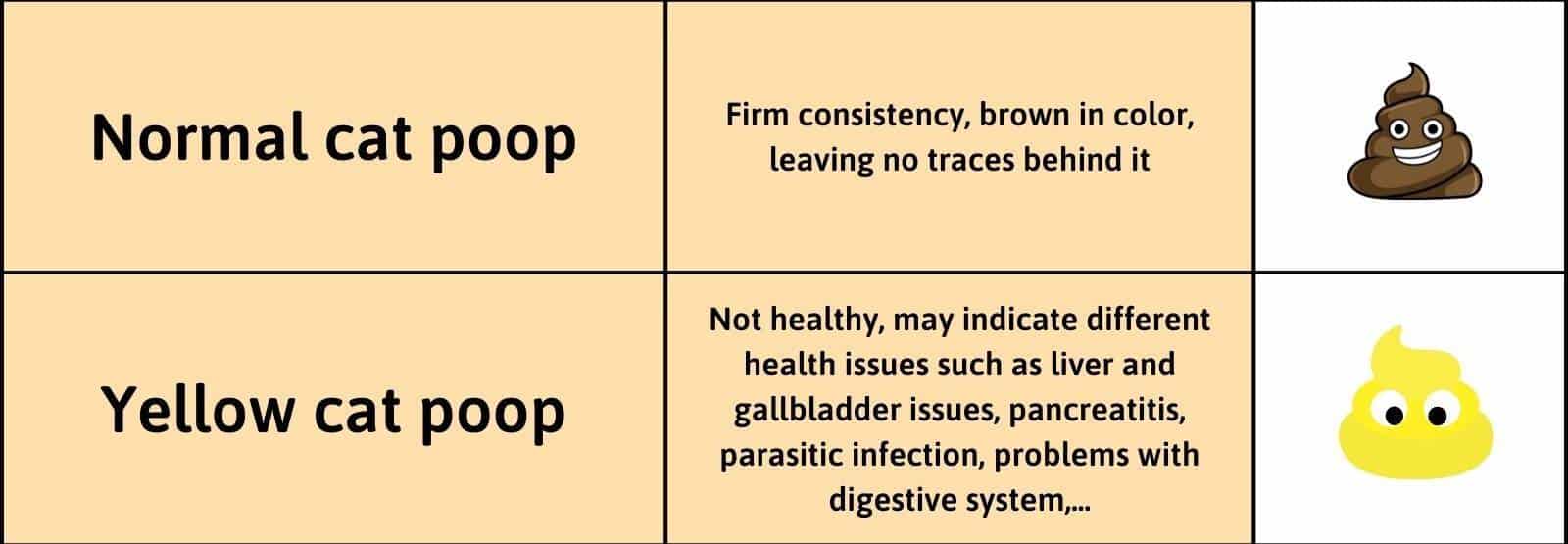
7 Reasons For Yellow Cat Poop
There are several reasons for yellow cat poop; read on to find out the most common causes for yellow cat poop, and what can you do about them…
1. Gallbladder Problems
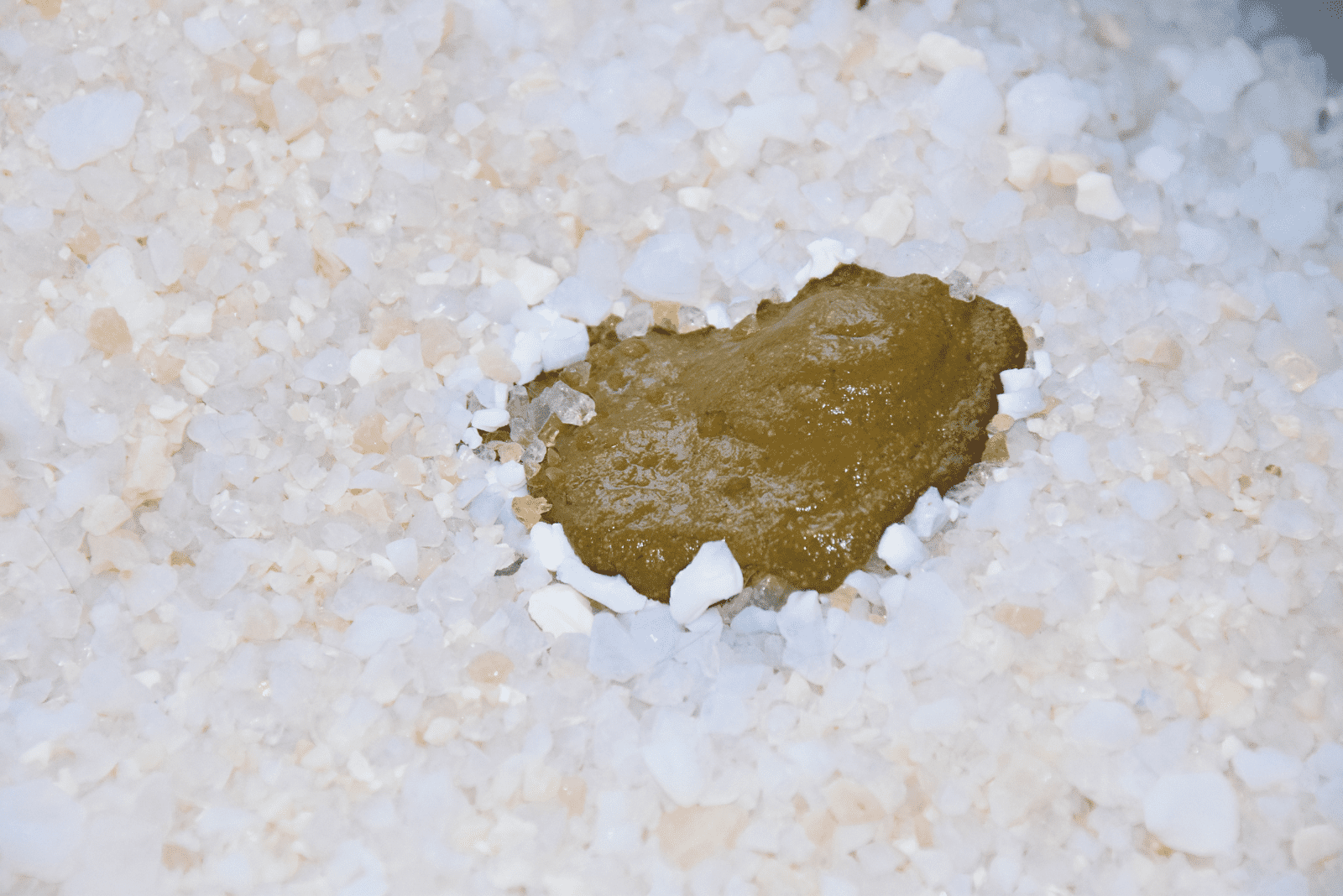
A normal cat’s stool is brown in color thanks to the proper function of the gallbladder, but when a cat has certain gallbladder problems, the cat’s poop color changes.
Therefore, such changes in the cat’s stool may warn you about certain health problems.
Other signs of gallbladder disease include nausea, vomiting, lethargy and weakness, loss of appetite, and tiredness.
Bacterial infections that first affect the intestines and later impact the bile duct or the cat’s bloodstream may be the root of gallbladder problems.
Along with these less severe signs of this health issue, gallbladder problems can occasionally be brought on by abdominal trauma or even tumors, which require special veterinarian care.
Treatment
If you notice some of the previously mentioned symptoms of gallbladder issues, then you should take your feline friend to the vet.
In order to get the right diagnosis, the vet will need to run some tests such as urinalysis, x-rays, blood tests, and similar.
Moreover, with appropriate treatment and care, your feline should be healthy and active again, perhaps sooner than you think!
To treat the problem, the vet may prescribe certain antibiotics and vitamin supplements. If the issue is caused by bacterial infection, they can prescribe other medications that will get your cat back on track!
These issues are usually treated with antibiotics, dietary changes, vitamin supplements, or other medications that will help your feline friend to recover.
2. Liver Problems
Yellow cat poop may be a result of a number of liver problems. However, liver disease may occur due to many different things, such as low-quality cat food, dysfunction of the cat’s organs, or poisons.
Liver conditions are usually accompanied by specific symptoms such as vomiting, excessive thirst, behavior changes, stomach ulcerations, loss of appetite, weight loss, weakness and lethargy, etc.
Cats that suffer from liver problems may often have yellow stool, especially if they have been exposed to toxic substances.
It can also cause jaundice, which is known to be one of the most recognizable signs of severe liver disease.
Treatment
If you notice some of these symptoms in your feline friend, especially yellow feces, then you should rush to the vet clinic with your kitty.
After the vet runs some tests and confirms the diagnosis he’ll be able to treat the cat properly.
Treatments for liver issues usually include dietary changes that include switching to a high-quality cat food with low carbohydrate levels.
3. Issues With The Digestive System

Digestive issues may develop often in cats, and they may appear all of a sudden or more gradually.
These issues are generally followed by specific symptoms such as loss of appetite, tiredness, pain, abdominal pain, inflammation, diarrhea, vomiting, and behavior changes.
There are many things that can be the main culprits for issues with the digestive system. These include food allergies, stress, constipation, intestinal blockages, hairballs, etc.
As these may cause great uncomfort and secondary health issues for your feline, it’s highly important to take the cat to the vet.
Treatment
Issues with the digestive system may be caused by several things. It is so important to take your cat to the vet so that he can determine the underlying cause for these issues, and begin the correct treatment.
The treatment, of course, depends on the underlying cause, but here are a few options:
• Food allergies – the treatment includes changes to the cat’s diet.
• Stress – find what stresses the kitty and try to reduce that stress.
• Constipation – a cat needs more water intake and wet food may help because it’s high in moisture.
• Intestinal blockage – in most cases, this problem requires surgery.
• Hairballs – groom your cat often in order to reduce dead hair and prevent the cat from ingesting it.
4. Pancreatitis
Pancreatitis is a common health issue in cats, and it can cause changes in the cat’s stool color and consistency.
The most common symptoms for this problem in cats are loss of appetite, weight loss, vomiting, abdominal pain, and jaundice. Additionally, pancreatitis can be one of the main reasons why a cat’s poop smells so bad.
Treatment
Pancreatitis in cats may be treated in different ways, depending on the severity of the problem.
For example, it can be treated with antibiotics, intravenous fluids, anti-inflammatory drugs, and other medications to help the cat recover more quickly.
However, the most important part of this treatment in cats is rest, because, despite all of the medications, the cat still needs to rest a lot in order for the pancreas to heal itself.
5. Colored Food
Most of the time, changes in your cat’s poop can be caused by a change in the cat’s diet, or a specific cat food.
The reason for that may be because most cat food contains artificial colors and flavors, and if you use some of these foods, it can cause the cat’s poop color to change.
If your cat has yellow-colored poop, it may be due to colored food, which is sometimes a sign of a lower-quality food, however, that’s not always the case.
Treatment
A change in the cat’s poop color isn’t a serious issue if it’s caused by colors in cat food. It’s completely okay, as long as it has firm consistency, and as long as the cat doesn’t show any other symptoms.
If you want your feline friend to have a normal brown poop color, then try changing the cat’s diet, and start using a top-quality cat food without any artificial flavors or colors.
However, if the cat starts showing any other symptoms, it may mean that the underlying cause is something more serious than diet-related changes, and you need to take your cat to the vet.
6. Zinc Toxicity
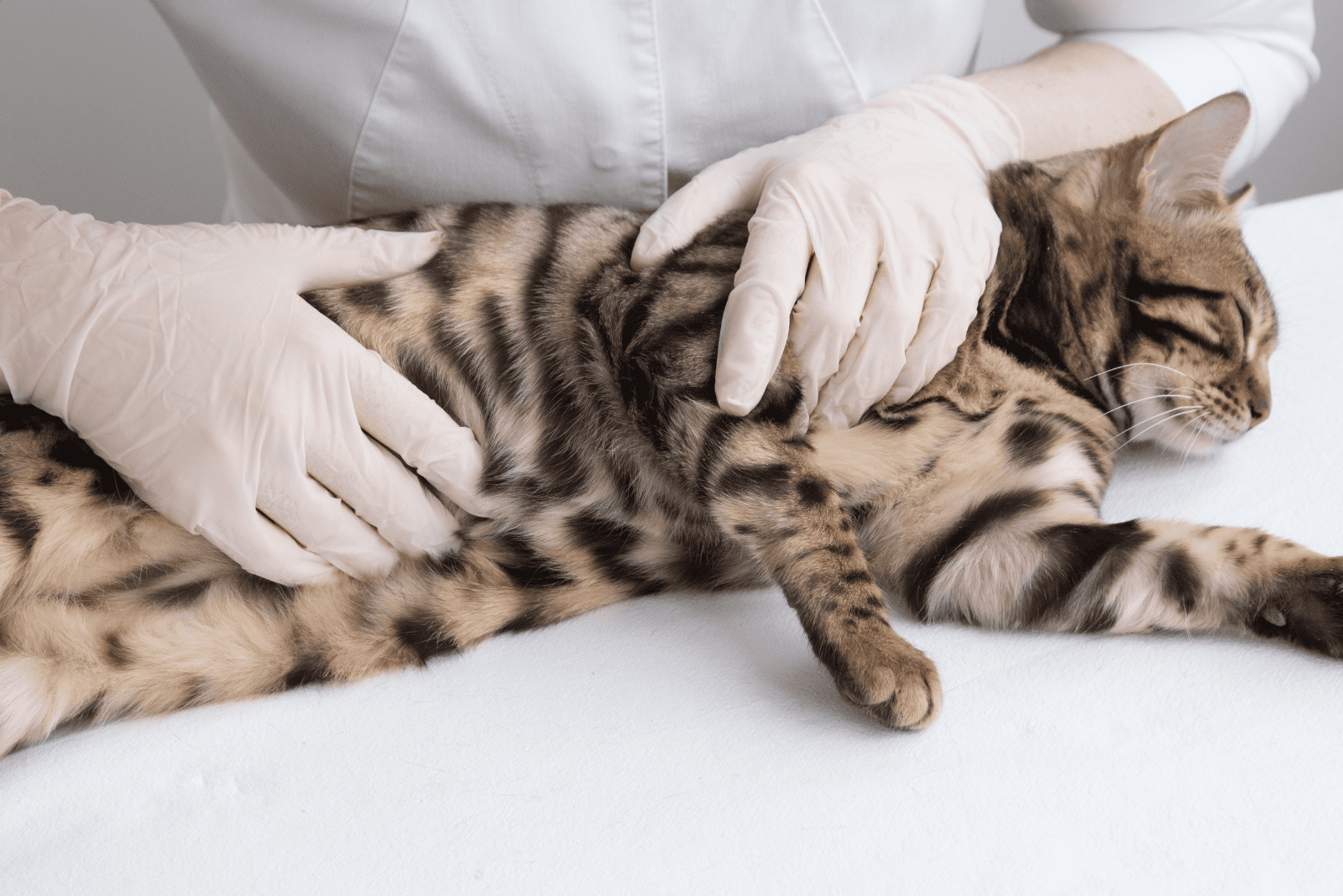
Another thing that may lead to yellow cat poop color is zinc toxicity. Zinc toxicity leads to the breakdown of red blood cells and this releases a high amount of bilirubin.
This can lead to light-colored cat stool, such as light brown or yellow poop, or even chronic diarrhea, as well as loss of appetite, anxiety, weakness, weight loss and similar symptoms.
Treatment
The treatment for zinc toxicity may include a blood transfusion, medications, and intravenous fluids. See your vet right away if you suspect this issue so treatment can begin as soon as possible.
7. Gastrointestinal Parasites
This is a common issue in cats and it’s very hard to avoid. Cats usually get infected through prey, eating contaminated food, or drinking contaminated water.
Fleas are the main carriers of these parasites, which is why they’re the main culprits when it comes to spreading parasites.
If a cat has fleas that are infected with worms, they can ingest them while grooming and that’s how they get infected.
There are few types of intestinal parasites that are common in cats but the most common ones are tapeworms and roundworms.
These attack the cat’s intestine (which is why they’re called intestinal parasites), and after that they attach to the walls of the small intestine.
After they reach their full length, they start to come out along with the cat’s feces in segments, increasing the risk of further contamination.
The main symptoms of a cat infected with worms are dehydration, diarrhea, loss of appetite, vomiting, weakness, tiredness, weight loss, and similar.
If your cat has a worm infection, you may wonder what should you do? Don’t worry, as I’ve got you covered for that too!
It’s very important to isolate the cat with a worm infection. This is good for several reasons; not only will you prevent the cat from contaminating your environment, you’ll protect them from infecting other cats and pets (if you have any), and finally you’ll protect yourself and your family!
It’s important to clean your house thoroughly if your cat has worms, in order to reduce the risk of worms spreading around your home.
Treatment
The treatment for gastrointestinal parasites is usually simple, but in severe infections it may get a bit more complicated.
First of all, you should take your cat to the vet so that he can determine what the problem is. After that, he will prescribe you a medication called a dewormer, which is commonly used in these situations.
It’s important that you clean everything carefully during the deworming process, and that your cat stays isolated until it is parasite-free.
The majority of dewormer medications work quickly and effectively to remove worms from the intestines and reduce their numbers.
After eliminating the fully developed worms, you must deal with the eggs that were left behind because more worms grow from the eggs left behind. This is why the procedure will need to be repeated after a few weeks if the kitty is severely affected.
Some at-home dewormers appear to be effective, however, I recommend you always consult with your vet first.
In order to prevent this issue from happening at all, the best thing to do is to regularly administer a preventative dewormer medication, after consultation with your veterinarian.
READ ALSO: What Smells Do Cats Hate? Everything You Need To Know
What To Do If Your Cat Has Yellow Poop?
If you notice yellow cat poop in your cat’s litter box, there are some things that you can do, but the most important thing is taking your cat to the vet. So, keep reading and find out what you can do to have a healthy cat again.
Take The Cat To The Vet!
First things first, if you notice yellow cat poop, with or without other symptoms, it’s best to take the cat to the vet for an examination.
The vet will be able to tell you whether it’s something serious or not. They should run some tests in order to discover the underlying cause for the symptoms.
The vet should also give your cat the proper treatment for its specific health problem.
However, if it’s nothing serious, and the yellow cat poo is simply a result of a new cat food, then he may advise you about dietary changes, which I recommend you to follow.
Change The Cat’s Diet!
If food is the main culprit for your cat’s yellow diarrhea or poop, then you should pay attention to the cat’s diet to prevent your feline friend from having unusually colored or loose stools.
You should consult with your vet who can give you a proper feeding schedule for your cat and switch it to a bland diet.
A bland diet may consist of boiled chicken and rice cooked at home or a prescription diet created for low-fat and GI issues that is recommended by your veterinarian.
After a few days of feeding your cat a bland diet, consult your veterinarian if the color and consistency of its feces do not improve.
Use Probiotics!
If you want to prevent your cat from having diarrhea or having yellow poop, you may consider giving your feline friend probiotics. Just as for humans, probiotics can be really helpful for cats too.
A probiotic is a dose of good bacteria that improves the cat’s digestive system. This helps in regulating the cat’s bowel movement, and stops cats from having diarrhea or yellow stool.
However, before providing your cat with any treatment, it’s so important to consult with your vet first and follow his advice.
If your vet approves of you using cat probiotics, here are 5 of the best, highly recommended cat products that you may want to consider.
1. Purina Pro Plan Veterinary Supplements Fortiflora
This probiotic for cats by Purina comes in a powder form. It is rich in nutritional supplements that keep the cat in good condition and help them with their digestion.
The best thing about this product is that it’s good for the diet of both young kittens and adult cats with diarrhea.
This probiotic is recommended by most veterinarians, therefore it’s the best choice if you want to discuss it with your vet.
If your vet approves it, you should know that this probiotic should be given to the cat along with the cat food. Make sure you follow your vet’s directions when using the probiotic.
2. Nutramax Proviable Health Supplements For Cats And Dogs
Buy Now!
This is another highly recommended probiotic for your furry friends. This one comes in the form of capsules, but it’s very easy to use them as you can sprinkle them into your pet’s food.
This is good for the pet’s gastrointestinal health and improves their digestion. The most important thing to note is that this probiotic contains prebiotics as well.
These are actually complex carbohydrates that are used as a food source that enable the growth of the probiotics in the digestive tract, improving the cat’s overall digestive health.
3. Great Pet Great Poop Digestive Support Cat Supplement
Buy Now!
This is another probiotic for cats that’s very popular among cat parents and highly recommended by vets.
What’s even better, is that this product is made in the USA, with the best ingredients for a quality supplement. It doesn’t contain any soy or corn, and no artificial additives or preservatives.
Cats love this digestive support supplement because it has a delicious chicken flavor which makes it hard for a cat to reject it.
Besides that, it comes in a form of a chew that contains seed powder, tummy-soothing ginger root powder, high-fiber pumpkin seed powder, and similar ingredients.
All of these ingredients promote easy digestion without having to deal with diarrhea or constipation anymore.
4. Royal Canin Digestive Care Dry Cat Food
Buy Now!
Royal Canin provides you and your feline with the perfect dry cat food for cats with digestive issues such as diarrhea, yellow stool, constipation, and similar problems.
This probiotic food is recommended by vets, however, the food is specially formulated for adult cats who have sensitive stomachs.
The food contains a decent amount of prebiotics and fiber that promote healthy digestion.
Moreover, the food is designed so that it makes the cat eat slower than usual so that it can digest it properly.
The ideal approach would be to combine this dry food with a quality wet cat food, but always follow your vet’s instructions.
READ ALSO: My Cat Keeps Throwing Up But Seems Fine – Should I Worry?
Why Is Cat’s Poop Color Important?
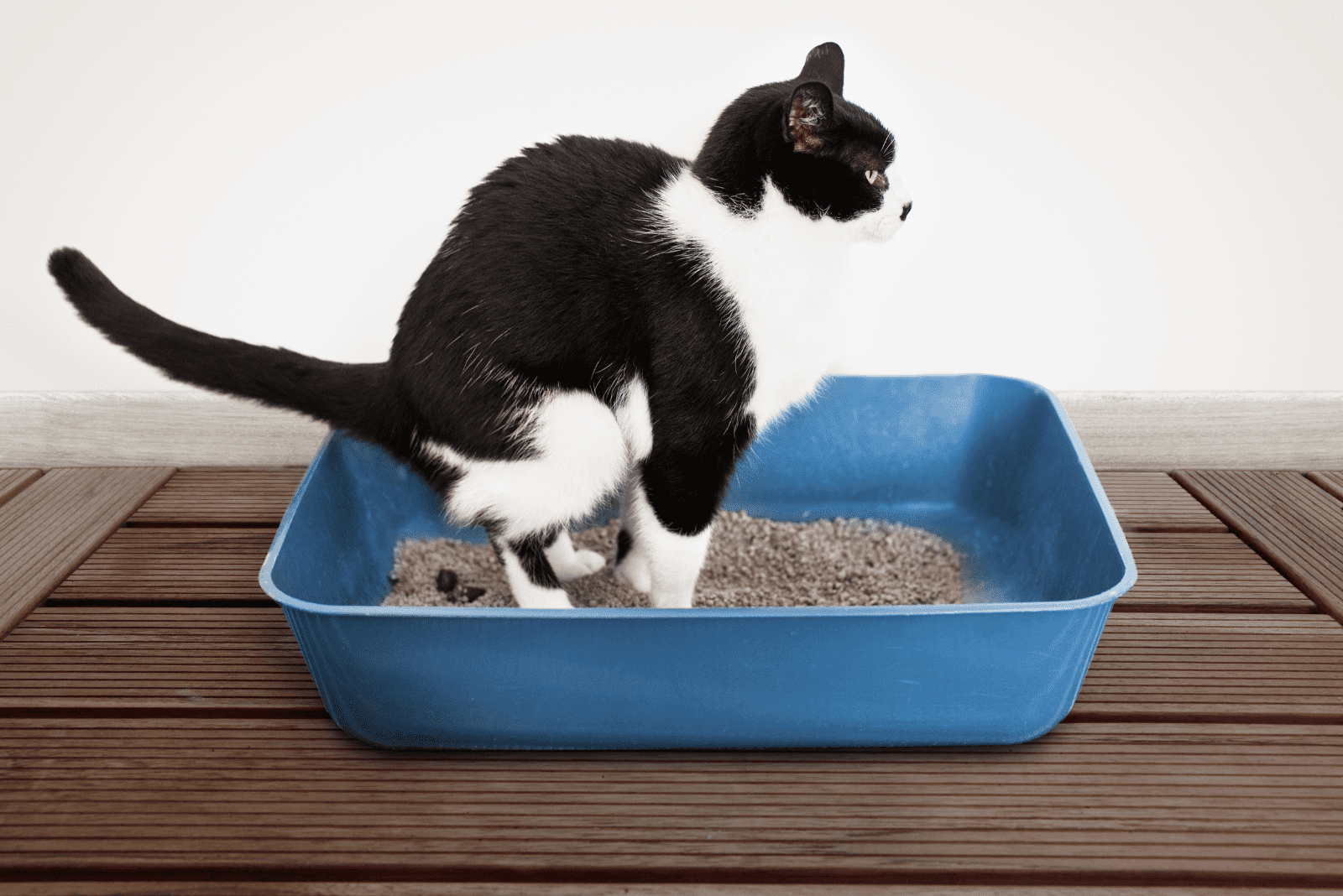
The color of a cat’s poop is very important because it can tell us a lot about the cat’s health. Almost every different poop color has a certain meaning, and most of them point to health issues that require special care.
So, in order to know how to react if you notice some of these colors in your feline’s stool, check out the following explanations!
Other Possible Cat Poop Colors
• Red cat poop color – red blood is never a good sign, especially in a cat’s poop. If you notice that your cat has red poop, it needs immediate help because it usually indicates bleeding from the anus. The bleeding may be caused by infectious diseases or bacterial infections.
• Orange cat poop color – this poop color usually denotes gallbladder or liver issues. It may also be a result of bacterial infections, therefore a cat with this issue needs to be properly examined.
• Green cat poop color – this poop color may or may not point to a serious issue. Green cat poop may simply be a result of a cat eating grass or it could be a sign of a bacterial or parasitic infection, due to consuming contaminated water or food.
• White cat poop color – this color usually appears as a result of health issues such as liver and kidney problems, dietary changes, bile duct issues, intestinal parasites, bacterial infections, etc.
• Black cat poop color – black and tarry cat’s stool, usually indicate bleeding from the cat’s gastrointestinal tract or from the large intestine. It’s often accompanied with symptoms such as weakness, vomiting, lethargy, nausea, and similar. This is a veterinary emergency.
• Brown cat poop color – finally, brown is the color of a normal cat’s stool. It can appear in different brown shades, from light brown to dark brown. However, in order to be a healthy stool, it should have a firm consistency and it shouldn’t leave traces on the cat’s litter box.
The poop’s consistency is also very important, so we will look at this issue next. It is very important to know the difference between healthy stool and “it’s time to visit the vet” stool.
Cat’s Stool Consistency
• Firm cat poop – a healthy and normal cat’s poop, without traces of other substances.
• Watery, runny cat poop – this usually means a cat leaking brown fluid, or cat diarrhea. This is usually a result of issues such as intestinal parasites, inflammatory bowel disease(IBD), bacterial infections, viruses, and food allergies.
• Half firm, half soft cat poop – this usually happens due to food intolerances, or other dietary changes. Additionally, it may happen due to stress.
• Dry and hard cat poop – this stool usually has a pebble shape; it may be a result of constipation, intestinal blockage, or dehydration.
• Mushy cat poop – this type of cat’s stool is particular to felines that are suffering from conditions such as bacterial infection, intestinal parasites, or food intolerances.
• Cat poop with content – you may notice hair, mucus or even grass in your cat’s poop. This may be the result of poor digestion, or some more serious issue, especially if the poop contains mucus.
All In All
After reading this article, I hope that you have gained new knowledge that will be helpful for both you and your feline friend in improving and protecting the cat’s overall health.
If you notice yellow cat poop, you should contact your veterinarian and take the cat to the vet for an examination.
There are several reasons for a yellow color in the cat’s poop, and each of these reasons has specific treatment.
Some of the health problems that may result in yellow cat poop include liver disease, gallbladder disease, issues with the digestive system, pancreatitis, zinc toxicity, colored food, and gastrointestinal parasites.
Each of these problems have certain symptoms that may help you recognize them easily, but only a vet can diagnose the problem with any certainty.
As soon as you notice the symptoms that have been mentioned throughout the article, it’s best to take your cat to the vet, at least preventively, because they will know exactly what to do.
It’s important to follow the vet’s instructions, to improve the cat’s diet, and to use probiotics if the vet agrees it may help.
So, remember everything you learned here, as it may be quite important for your furry friend if they encounter any of these issues.
Like this post? Share or pin it for later!


